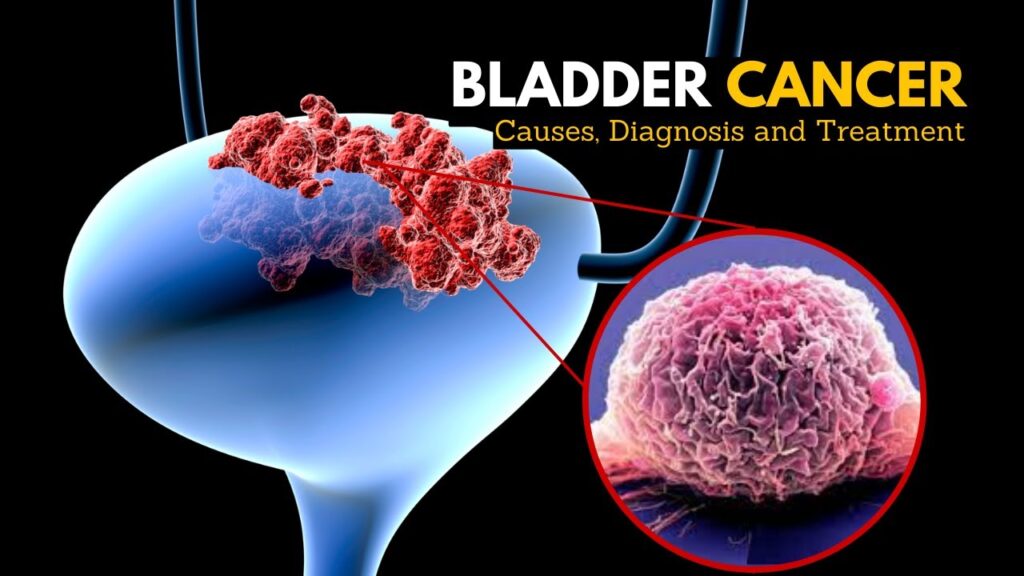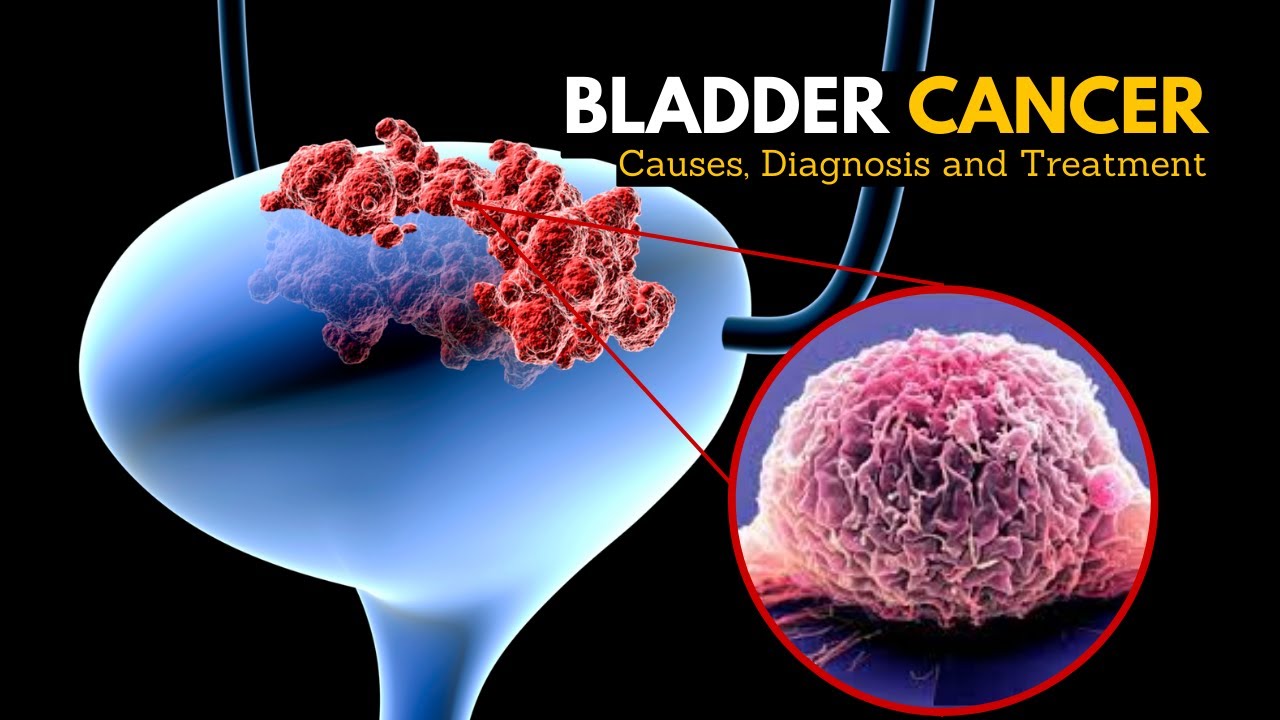Bladder cancer is a common yet manageable condition that affects thousands of people annually in the USA. With advances in early detection and treatment, outcomes have improved significantly. This article explains bladder cancer, its causes, symptoms, and prevention in simple terms for better understanding.

What is Bladder Cancer?
Bladder cancer starts when cells in the bladder’s lining grow abnormally. The bladder is a hollow organ in the pelvis that stores urine before it leaves the body.
Types of Bladder Cancer
- Transitional Cell Carcinoma (TCC): The most common type, starting in the cells lining the bladder.
- Squamous Cell Carcinoma: Linked to chronic bladder irritation or infections.
- Adenocarcinoma: A rare type that begins in glandular cells.
Who is at Risk for Bladder Cancer?
Several factors increase the risk of bladder cancer:
- Smoking
Smoking is the leading cause of bladder cancer, accounting for about 50% of cases in the USA. Harmful chemicals in cigarettes accumulate in the bladder and damage its lining. - Age and Gender
- Bladder cancer is more common in people over 55.
- Men are about three times more likely to develop bladder cancer than women.
- Chemical Exposure
Jobs in industries like dyeing, rubber, and petroleum may expose workers to cancer-causing chemicals. - Chronic Bladder Issues
Repeated urinary infections or long-term catheter use can increase risk. - Family History
A family history of bladder cancer or genetic mutations raises the chances of developing it.
Symptoms of Bladder Cancer
Bladder cancer symptoms can be subtle at first, making early detection critical. Common signs include:
- Blood in the urine (hematuria), often painless and recurring.
- Frequent or painful urination.
- Pelvic pain or lower back pain in advanced cases.
- Feeling the need to urinate but being unable to.
If you notice any of these symptoms, it’s important to see a doctor right away.
How is Bladder Cancer Diagnosed?
Bladder cancer diagnosis involves several steps:
- Urine Tests
These look for abnormal cells or markers linked to cancer. - Cystoscopy
A thin camera is inserted into the bladder to examine its lining directly. - Biopsy
During a cystoscopy, a small tissue sample may be taken for further examination. - Imaging Tests
- CT or MRI scans: Help detect the spread of cancer.
- Ultrasound: Can identify tumors in the bladder.
Stages of Bladder Cancer
Bladder cancer is staged to determine its severity:
- Stage 0: Cancer is limited to the bladder’s lining.
- Stage I: Cancer has spread into the bladder wall but not muscle.
- Stage II: Cancer invades the muscle layer.
- Stage III: Cancer spreads to nearby organs or tissues.
- Stage IV: Advanced cancer that has spread to distant areas like bones or lungs.
Treatment Options for Bladder Cancer
The treatment plan depends on the stage and type of bladder cancer:
- Surgery
- Transurethral Resection (TURBT): Removes small tumors using a cystoscope.
- Cystectomy: Partial or complete removal of the bladder in severe cases.
- Intravesical Therapy
Medication is delivered directly into the bladder to target cancer cells. - Chemotherapy
Used to kill cancer cells, especially if cancer has spread. - Radiation Therapy
Often combined with chemotherapy to treat advanced stages. - Immunotherapy
Treatments like BCG (Bacillus Calmette-Guerin) help the immune system attack cancer.
Preventing Bladder Cancer
While not all bladder cancer is preventable, you can reduce your risk by:
- Quitting smoking: This single action significantly lowers your chances.
- Drinking plenty of water: Staying hydrated helps flush toxins out of your bladder.
- Limiting exposure to harmful chemicals: Wear protective gear if you work in high-risk industries.
- Eating a healthy diet: Include fruits and vegetables rich in antioxidants.
“An ounce of prevention is worth a pound of cure.” – Benjamin Franklin
Bladder Cancer in the USA
According to the American Cancer Society, over 82,000 new cases of bladder cancer are diagnosed yearly in the USA. Public awareness campaigns and improved screening methods are helping detect cases earlier, leading to better outcomes.
Where to Learn More
For additional insights and resources on bladder cancer, visit medicaltimes.io. Other trusted sources include:
- American Cancer Society (cancer.org)
- Mayo Clinic (mayoclinic.org)
- Bladder Cancer Advocacy Network (bcan.org)
- Bladder cancer – Symptoms and causes
- Bladder Cancer: Symptoms, Causes & Treatment
- Bladder Cancer – Symptoms & Causes – Gleneagles Hospital
Top 10 FAQs About Bladder Cancer
- What is bladder cancer?
Bladder cancer occurs when abnormal cells grow in the bladder lining or wall. - What causes bladder cancer?
Smoking, chemical exposure, and chronic bladder issues are common causes. - What are the symptoms of bladder cancer?
Blood in the urine, frequent urination, and pelvic pain are key signs. - Can bladder cancer be treated?
Yes, with surgery, chemotherapy, radiation, or immunotherapy. - Is bladder cancer fatal?
Early-stage bladder cancer is highly treatable, but advanced stages can be life-threatening. - Who is at risk for bladder cancer?
Smokers, older adults, men, and people exposed to certain chemicals are at higher risk. - How is bladder cancer diagnosed?
Through urine tests, cystoscopy, and imaging scans. - Can bladder cancer come back?
Yes, it has a high recurrence rate, so regular follow-ups are important. - How can I reduce my risk of bladder cancer?
Quit smoking, stay hydrated, and avoid harmful chemicals. - Where can I find support?
Organizations like the Bladder Cancer Advocacy Network offer resources and support.
